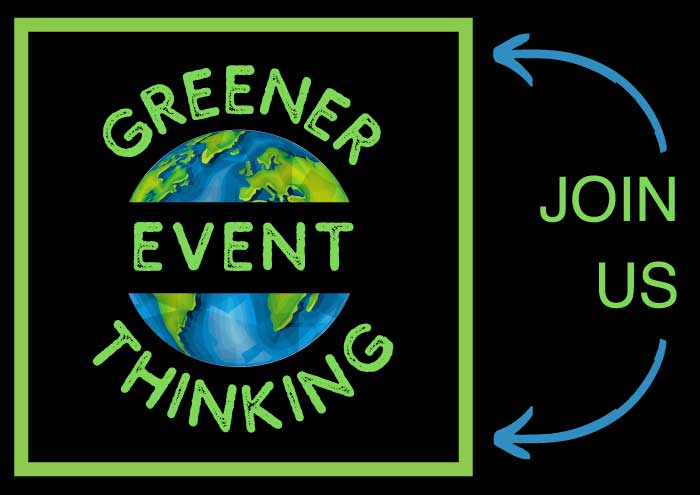
Virtual Reality For Events: Event Experts On Virtual And Augmented Reality
Virtual reality has become commonplace in the video game world thanks to the Oculus Rift and PlayStation VR; meanwhile, we’ve already started seeing augmented reality making an appearance in mobile gaming with the huge success of Pokémon Go.
The sophistication of these technologies is going to grow beyond gaming as is our access to them. Already it’s possible to have virtual reality booths wowing guests at events.
For event designers, the question isn’t going to be just how to entertain guests with virtual and augmented reality, but how to use them in a way that allows for a shared and focused experience on the day.
To see what role these altered states of reality will play in the future of events, we asked several experts in technology and events to give us their insights.
Michael Piddock, Glisser | Twitter: @glisser
“Events are no longer seen in isolation but as a highly evocative and powerful part of a much bigger audience engagement effort, taking place on and offline. They need to be designed with this in mind, with technology and data running through them like lifeblood, rather than an afterthought or gimmick.”
Maricar Jagger, Portsmouth University | Twitter: @portsmouthuni
“Last year I predicted the rise of Virtual Reality being used for events and I think the experience economy will continue to develop, but organisers will be faced with increasing ethical dilemma.
There is a sea of change and 2018 might be the Year of the Underdogs, when marginalised groups will demand better diversity at events.”
Sandy Hammer, AllSeated | Twitter: @Allseatedcom
“Technology is not a luxury today the way it has been in previous years. Technology is a part of our daily lives which means clients are demanding it as a critical part of the event planning process.
Event professionals must not only stay ahead of trends but adapt to the needs of their clients.
Clients will be demanding more visual exposure for their events. The aspect of feeling, touching and experiencing will be a given once Virtual Reality, Augmented Reality and 360 becomes the day to day activity for us as planners. The phones will adapt to VR and clients will immerse themselves into this reality.
As AR arrives we will be able to build and explore spaces without putting a piece of real furniture but the Argument will make it feel real enough to reach out and touch.
The future Is happening – being able to scan venues in 360 images and then reproducing them in 3D design will give clients the full version of the space and layout of what it’s going to look like months before the event. It’s a game changer for our industry big time.”
Mauricio Palacio, Eventtia | Twitter: @Eventtia
“Event professionals must take into consideration a few game changers. First, it’s important to understand that we are living in a society where data is the new oil. We can’t do much without building a powerful data ecosystem.
The same way we were talking about business intelligence a few years ago, we can highlight the emergence of event intelligence. This new concept describes the technology-driven mechanism of collecting data and generating actionable roadmaps to help professionals make informed planning and event marketing decisions, while focused on attendees’ needs and interests.
Second, let’s not forget that AI became the new electricity. Although we are operating in terms of weak AI, as event professionals, we must understand that our events are gradually heading towards mass personalisation, seamless user experience and attendee journey automatisation.
Third, it’s crucial to provide a safe environment, where the interaction between our guests and the event technology feels natural and easy to explore.
Planning an event nowadays isn’t just about using technology wisely—it’s also about designing a digital experience that emphasises attendees’ interests and needs. It’s wrong to evaluate the success of your event by summing up the number of event app downloads, for example.
Instead, we should focus on providing the natural and undisrupted experience that can add massive value to our attendees. That’s why we must design events where technology works in the background, being less intrusive.”
The New Realities Of Events: Virtual Reality For Events And The Future
More so than some of the other budding event technologies, it appears that VR and AR really have the ability to change how guests interact with an event on a fundamental level.
They aren’t going to simply be fun distractions or a passing fad – they will shape the way people access venues, connect with other guests, and view live performances.
AR allows users to see digital images on real-world objects and this could revolutionise presentations when they are paired with digital handouts and 3D models right at a guest’s table.
As wearable technology increases in popularity, it will even be possible to incorporate AR into the design of centrepieces and furnishing for a truly unique style at every event. Take a look at some of Table Art’s centrepieces for an idea of the possibilities.
For certain industries where visualisation is important such as architecture, engineering, or design, the ability to explore a 3D space in virtual reality will become essential. However, designing a 3D experience will require expertise and unlike keynote presentations, clients will expect more involvement from event organisers.
Thanks to our experts for taking the time to discuss the future of event technology with us. It’s a future that is going to demand a lot from the people organising and designing events, and we’ll have to pay attention to several new horizons.


